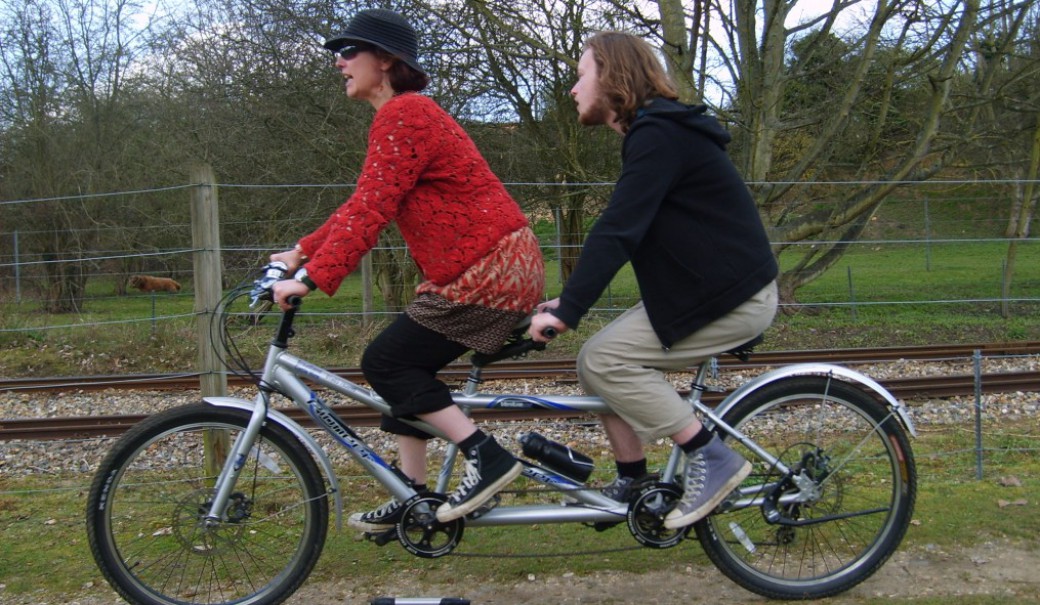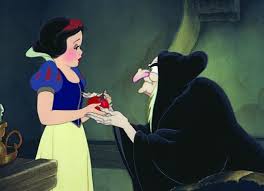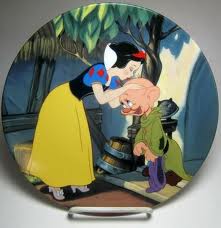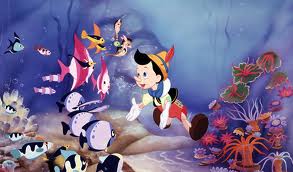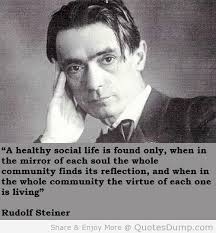 In my last post I challenged the way we conceptualise ‘friendship’ suggesting that our dominant model is not only inadequate in relation to autism but that it can problematise children more generally, particularly within educational environments. In this post I identify difficulties with two further concepts, ‘independence’ and ‘competence’.
In my last post I challenged the way we conceptualise ‘friendship’ suggesting that our dominant model is not only inadequate in relation to autism but that it can problematise children more generally, particularly within educational environments. In this post I identify difficulties with two further concepts, ‘independence’ and ‘competence’.
‘Independence’ is a concept which is frequently applied to the disabled community by policy makers, professionals and service providers. The use of the term has already been eloquently challenged by others (I provide links to a couple of examples at the end of this post) and my intention here is only to add a couple of reflections of my own. The other concept, ‘competence’, is used by the disabled community itself (as in ‘presume competence’) but is a term which I argue may also be considered problematic.
Defining independence
1. free from control in action, judgment, etc; autonomous
2. not dependent on anything else for function, validity, etc; separate
3. not reliant on the support, esp financial support, of others
4. capable of acting for oneself or on one’s own
5. providing a large unearned sum towards one’s support (esp in the phrases independent income, independent means)
6. living on an unearned income[Collins English Dictionary (mathematical definitions omitted)]
 Policy makers and service providers bandy the word ‘independence’ around constantly. Dylan, I am told, must be supported to be an independent adult. Since he left school he has received a personal budget which is intended to facilitate such independence. I don’t think I’ve filled in a form, attended a meeting or read a Dylan-related document where the word ‘independence’ hasn’t been used at least once. I used to interject every time the word was used: excuse me but I don’t think you understand – ‘independence’ isn’t an appropriate concept in relation to Dylan. After a while I realised there wasn’t any point; ‘the I word’ was on a checklist and would be raised so a box could be ticked.
Policy makers and service providers bandy the word ‘independence’ around constantly. Dylan, I am told, must be supported to be an independent adult. Since he left school he has received a personal budget which is intended to facilitate such independence. I don’t think I’ve filled in a form, attended a meeting or read a Dylan-related document where the word ‘independence’ hasn’t been used at least once. I used to interject every time the word was used: excuse me but I don’t think you understand – ‘independence’ isn’t an appropriate concept in relation to Dylan. After a while I realised there wasn’t any point; ‘the I word’ was on a checklist and would be raised so a box could be ticked.
The nature of Dylan’s disability (the particular combination of his autism and learning disability) mean that he is not now (and probably never will be) able to act autonomously or separately or without support from others or alone. Dylan meets only one of the above definitions of independence and then not in the sense intended; ‘living on an unearned income’ usually refers to stocks and shares not to disability benefit.
Independence and economics
 I like the definitions of ‘independence’ provided by Collins because they include reference to finance and economics. And the obsession with supporting disabled people to achieve independence is, I would argue, solely about resources: the reason policy makers, social workers and civil servants want autistic people to ‘achieve independence’ is because it is cheaper. If Dylan and his peers can be independent (even for part of their lives) then their support levels can be adjusted and the cost of care reduced. Under the guise of promoting independence, savings in social care are made.
I like the definitions of ‘independence’ provided by Collins because they include reference to finance and economics. And the obsession with supporting disabled people to achieve independence is, I would argue, solely about resources: the reason policy makers, social workers and civil servants want autistic people to ‘achieve independence’ is because it is cheaper. If Dylan and his peers can be independent (even for part of their lives) then their support levels can be adjusted and the cost of care reduced. Under the guise of promoting independence, savings in social care are made.
 Actually, the independence we urge on neurotypical young adults is probably also chiefly economic. When we tell our teenage children that they must learn to ‘stand on their own two feet’ what we are usually talking about is financial not practical or emotional independence. While the drive for such independence may be appropriate for many of us, young adults with an Autistic Spectrum Condition need support with their lives to varying degrees. In the UK the preferred approach to achieving budget cuts is to reduce support to those judged least in need. Far from supporting independence, however, such cuts can jeopardise the ability to live semi-independently in the community as one of the links at the end of this post illustrates.
Actually, the independence we urge on neurotypical young adults is probably also chiefly economic. When we tell our teenage children that they must learn to ‘stand on their own two feet’ what we are usually talking about is financial not practical or emotional independence. While the drive for such independence may be appropriate for many of us, young adults with an Autistic Spectrum Condition need support with their lives to varying degrees. In the UK the preferred approach to achieving budget cuts is to reduce support to those judged least in need. Far from supporting independence, however, such cuts can jeopardise the ability to live semi-independently in the community as one of the links at the end of this post illustrates.
Interdependence and community
 But my concern about the conceptualisation of ‘independence’ is not only that the real agenda behind it is economic. At a more philosophical level I am troubled by the suggestion that ‘independence’ is something inherently valuable which we should all be aiming for. Surely we should be emphasising our interdependence and promoting relationships which are mutually supportive? Should we not be encouraging members of society away from the sense that they are self-sufficient and self-sustaining, independent of the society of which they are part? Isn’t that the sort of thinking which allows communities to isolate and fragment?
But my concern about the conceptualisation of ‘independence’ is not only that the real agenda behind it is economic. At a more philosophical level I am troubled by the suggestion that ‘independence’ is something inherently valuable which we should all be aiming for. Surely we should be emphasising our interdependence and promoting relationships which are mutually supportive? Should we not be encouraging members of society away from the sense that they are self-sufficient and self-sustaining, independent of the society of which they are part? Isn’t that the sort of thinking which allows communities to isolate and fragment?
And in any case, what exactly is the problem with ‘dependence’? Aren’t we all dependent on others for some of our needs as human beings and members of society? Dylan might be more dependent on others than most of us, but that doesn’t make him any less precious as a human being. I am deeply uncomfortable with the apparent pressure on us to measure somebody’s worth in terms of their independence from others; being emotionally, practically or financially dependent on others does not make someone less valuable.
Defining competence
As it happens one of the historic definitions of ‘competence’ relates to economic independence though this is not the sense in which I am interested in the word for purposes of this post.
1. the condition of being capable; ability
2. a sufficient income to live on
3. the state of being legally competent or qualified
[Collins English Dictionary]
 ‘Competence’ is increasingly applied by the autistic community (particularly within the US) in the sense of being capable; we should, it is suggested, ‘presume competence’ in our autistic children, particularly those who do not speak. Not being verbal, it is pointed out, is not the same as not being capable; the dangerous default position of the past has been to assume that an autistic child who doesn’t speak is intellectually impaired and incompetent.
‘Competence’ is increasingly applied by the autistic community (particularly within the US) in the sense of being capable; we should, it is suggested, ‘presume competence’ in our autistic children, particularly those who do not speak. Not being verbal, it is pointed out, is not the same as not being capable; the dangerous default position of the past has been to assume that an autistic child who doesn’t speak is intellectually impaired and incompetent.
Some marvellous and moving stories have emerged from those parents and professionals who have ‘presumed competence’ in autistic children; the shift in attitude from presuming a child cannot do something to presuming they can has produced startling outcomes for some families, often via ‘facilitated communication’ (there is a link to one such example at the end of this post). These stories have also, however, created something of a backlash from other parents, particularly those caring for autistic children with a significant learning disability or co-morbid condition.
To do and to be
 For some parents, presuming competence of their children is hard because it can set up the potential for failure. As the parent of a young man with a significant learning disability I understand this concern. I’m not suggesting, however, that we should start from the assumption that a child cannot achieve; for me, the difficulty is in the use of the word ‘competence’ rather than with the risk of disappointment. For just as I don’t think being independent makes somebody a more valuable person, so I don’t believe that a competent person is any better than somebody who can’t do or say something. So my concern with ‘presuming competence’ is that we are giving status to achievement and suggesting that a person’s worth is measured by their ability to achieve.
For some parents, presuming competence of their children is hard because it can set up the potential for failure. As the parent of a young man with a significant learning disability I understand this concern. I’m not suggesting, however, that we should start from the assumption that a child cannot achieve; for me, the difficulty is in the use of the word ‘competence’ rather than with the risk of disappointment. For just as I don’t think being independent makes somebody a more valuable person, so I don’t believe that a competent person is any better than somebody who can’t do or say something. So my concern with ‘presuming competence’ is that we are giving status to achievement and suggesting that a person’s worth is measured by their ability to achieve.
But perhaps the word ‘competence’ just rattles me because in my professional field it comes with negative connotations. In England in the early 1990s there was a move from Initial Teacher Education in the Universities to Initial Teacher Training in schools. As part of this policy drift a curriculum for teachers was established at the heart of which were a set of professional competences. Teacher educators argued at the time (and since) that these competences reduce the work of a teacher to a set of instrumental skills while not capturing the philosophy of being a teacher. When working with children and young people, they suggested, teachers draw on values and beliefs about education which cannot be reduced to a set of ‘can do’ competences. From such a perspective, becoming a teacher is not a question of ‘to do’ but ‘to be’. Similarly, Dylan is a valuable person and human being because of who he is, not because of what he can do.
Presume nothing
 Perhaps, as a result, I resist the word ‘competence’. The Collins dictionary offers another definition of ‘competence’, however (the omitted definition 4 relates to embryology):
Perhaps, as a result, I resist the word ‘competence’. The Collins dictionary offers another definition of ‘competence’, however (the omitted definition 4 relates to embryology):
5. (linguistics) (in transformational grammar) the form of the human language faculty, independent of its psychological embodiment in actual human beings
Perhaps it is linguistic competence, specifically, which parents are being encouraged to presume in their children by others in the autism community? This seems to me to be likely given that the lobby for presuming competence is often allied to the Facilitated Communication movement. Perhaps I am being a bit pedantic when I suggest that, if this is the case, it might be helpful if we referred to ‘presuming linguistic competence’ rather than presuming competence more generally?

Am I comfortable presuming linguistic competence of Dylan? To some extent. I have tried to facilitate Dylan’s communication in various ways and have provided him with a range of opportunities: signing, letters, pictures, a keyboard, symbols, talking software. Some of these have helped but I still have the sense that Dylan’s linguistic competence is compromised, perhaps by childhood meningitis (which you can read about here).
Having said that, Dylan’s receptive language skills continually surprise me. A few weeks ago, for example, I was listening to BBC Radio 4 (a news and current affairs channel) while driving Dylan to his day centre one morning. A couple of politicians were engaged in the usual bluster. ‘You’re barking up the wrong tree there’ one of them said to the other. From the back seat Dylan added his voice: ‘woof woof, woof woof’.
 I laughed so hard. I had no idea that Dylan listened in to the radio or was capable of processing the noise of a broadcast, even at keyword level. I have always tried to keep an open mind with Dylan but the incident reminded me of how important this is. My motto, if I have one, is not ‘presume competence’ or even ‘presume linguistic competence’ but ‘presume nothing’.
I laughed so hard. I had no idea that Dylan listened in to the radio or was capable of processing the noise of a broadcast, even at keyword level. I have always tried to keep an open mind with Dylan but the incident reminded me of how important this is. My motto, if I have one, is not ‘presume competence’ or even ‘presume linguistic competence’ but ‘presume nothing’.
Useful resources
- Here is a link to a blog post on independence by a parent of a young autistic man:
http://30daysofautism.wordpress.com/2013/08/16/problem-solver-and-redefining-independence/
- This link is to an article on independence by a young woman who is herself autistic (via the Autism Women’s Network):
http://autismwomensnetwork.org/challenging-the-usual-concept-of-independence/
- This link is to the blog of a parent who uses Facilitated Communication with her autistic daughter and who reflects on issues around ‘presumed competence’ :
http://emmashopebook.com/about-2/
Images
The photographs of Dylan on climbing frames were taken at school and in Grindleford playground. Dylan went to a climbing centre with a group from his day centre recently and as the photos show this was a great success. Coming down was, apparently, more challenging than going up. The final photograph is of me on a glass walkway.
